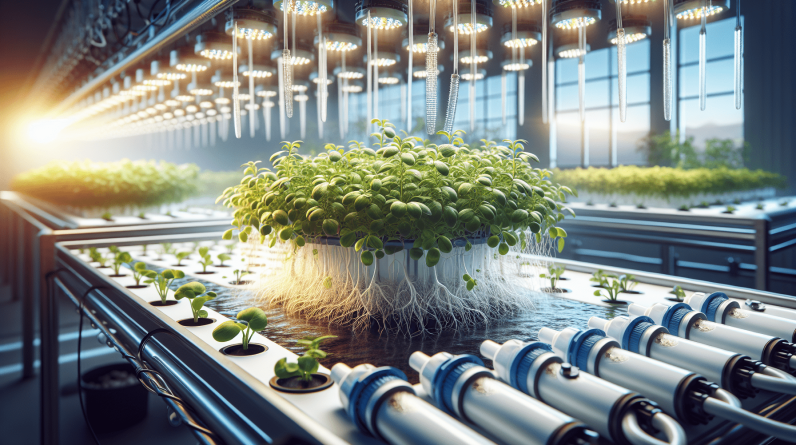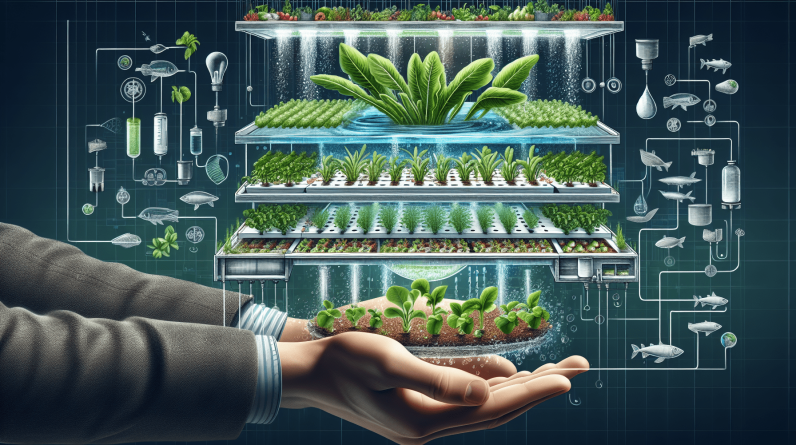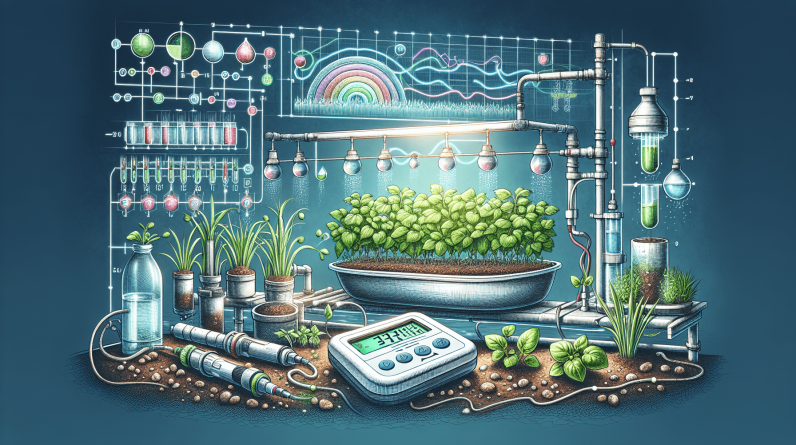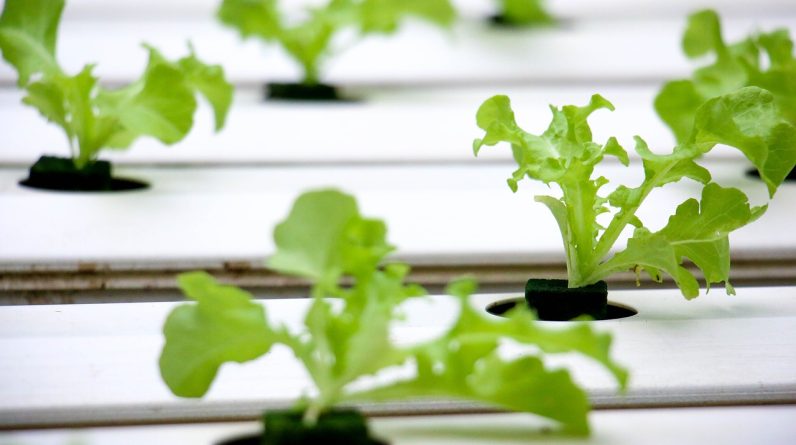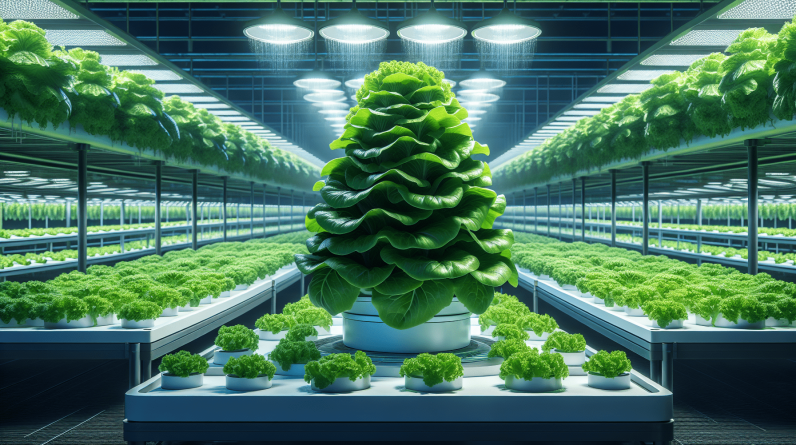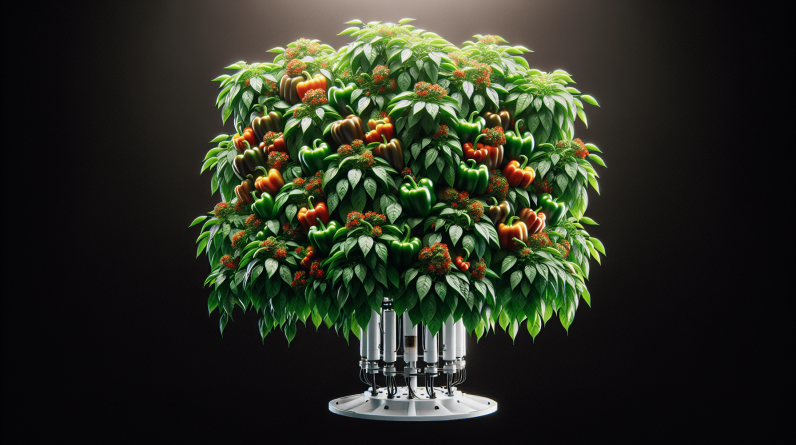
How to Maximize Pepper Yield in Hydroponic Systems
Have you ever considered growing peppers in a hydroponic system to maximize your yield? In this article, we will explore the tips and techniques to help you achieve the best results with your hydroponic pepper crop.
Benefits of Hydroponic Growing Systems
Hydroponic growing systems offer a multitude of benefits that make them an attractive choice for modern gardening. These systems allow you to grow plants faster and increase yield by delivering a nutrient-rich solution directly to the roots, eliminating the need for soil. This method results in up to 90% less water usage compared to traditional soil gardening, and it enables year-round cultivation regardless of external weather conditions. Furthermore, hydroponic systems reduce the risk of soil-borne diseases and pests, leading to healthier plants with fewer chemicals needed for maintenance. Overall, hydroponics offers a sustainable and efficient approach to growing fresh and nutritious crops.
How Peppers Thrive in Hydroponic Systems
Peppers thrive in hydroponic systems due to the controlled environment and optimal nutrient delivery they provide. By growing peppers in a hydroponic setup, you can fine-tune the growing conditions to suit the specific needs of this plant species. The controlled environment ensures that peppers receive the perfect balance of nutrients, water, and light, resulting in vigorous growth and maximum yield.
Selecting the Right Pepper Varieties for Hydroponics
When choosing pepper varieties for your hydroponic system, it is essential to select cultivars that are well-suited for this type of growing environment. Look for pepper varieties that have been bred for indoor or greenhouse cultivation, as they tend to perform better in hydroponic systems. Some suitable pepper varieties for hydroponics include bell peppers, jalapeños, habaneros, and banana peppers.
Tips for Choosing Pepper Varieties
Consider factors such as growth habit, fruit size, color, and flavor when selecting pepper varieties for hydroponic cultivation. Choose varieties that are known for their high yield potential and resistance to diseases to maximize your chances of success. Additionally, consider your personal preferences and culinary needs when selecting pepper varieties to grow in your hydroponic system.
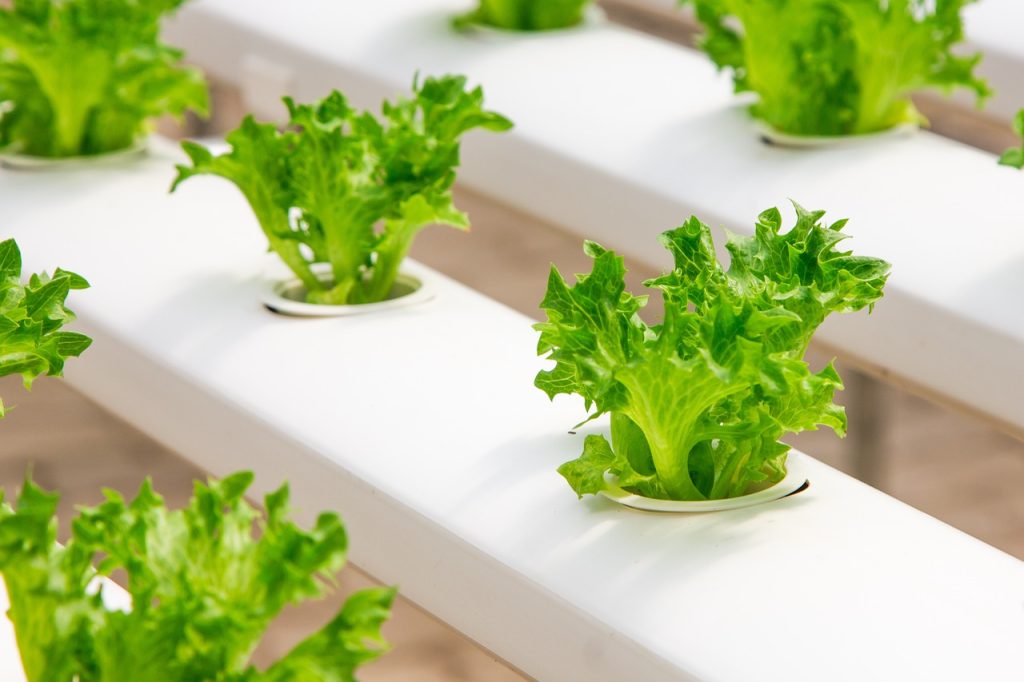
Setting Up Your Hydroponic Pepper System
Proper setup is crucial for the success of your hydroponic pepper crop. When designing your hydroponic system, consider factors such as the type of system, lighting, nutrient solution, and growing medium to create the optimal growing environment for your peppers.
Components of a Hydroponic Pepper System
A typical hydroponic pepper system consists of components such as a reservoir, pump, grow tray, growing medium, nutrient solution, pH meter, and light source. Each of these components plays a vital role in supporting the growth and development of your pepper plants. Ensure that these components are correctly chosen and installed to maximize the yield of your hydroponic pepper crop.
Nutrient Requirements for Hydroponic Peppers
Providing the right nutrients is essential for growing healthy and productive peppers in a hydroponic system. Understanding the nutrient requirements of peppers will help you optimize your nutrient solution and ensure that your plants receive everything they need to thrive.
Key Nutrients for Hydroponic Peppers
Pepper plants require essential nutrients such as nitrogen, phosphorus, potassium, calcium, magnesium, and sulfur to grow and produce fruit. These nutrients play a crucial role in various plant processes, including photosynthesis, root development, and fruit formation. Ensure that your nutrient solution contains the correct balance of these nutrients to support optimal growth and yield in your hydroponic pepper crop.
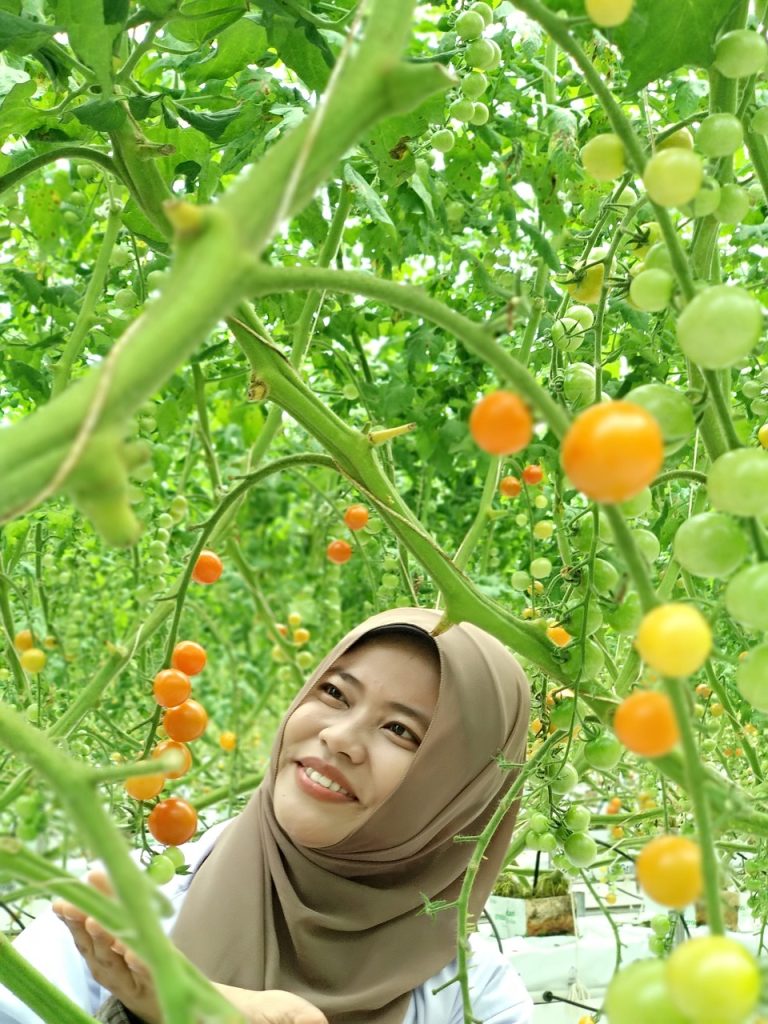
Lighting Requirements for Hydroponic Peppers
Proper lighting is essential for the growth and development of pepper plants in a hydroponic system. Providing adequate light intensity, duration, and spectrum will help your peppers thrive and achieve maximum yield.
Types of Grow Lights for Hydroponic Peppers
When growing peppers in a hydroponic system, consider using high-quality grow lights such as LED, fluorescent, or high-pressure sodium (HPS) lights. These lights provide the specific light spectrum that pepper plants need for photosynthesis and growth. Ensure that your grow lights are positioned at the correct distance from your plants to maximize light absorption and encourage healthy growth.
Pest and Disease Management in Hydroponic Pepper Systems
Preventing pests and diseases is crucial for maintaining the health and productivity of your hydroponic pepper crop. Implementing effective pest and disease management strategies will help you keep your plants free from harmful pathogens and pests.
Integrated Pest Management for Hydroponic Peppers
Integrated Pest Management (IPM) involves using a combination of cultural, physical, biological, and chemical control methods to manage pests in a sustainable and environmentally friendly manner. When implementing IPM strategies in your hydroponic pepper system, monitor your plants regularly, maintain proper hygiene, and use natural predators to control pest populations. Avoid the indiscriminate use of chemical pesticides, as they can harm beneficial insects and pollute the environment.
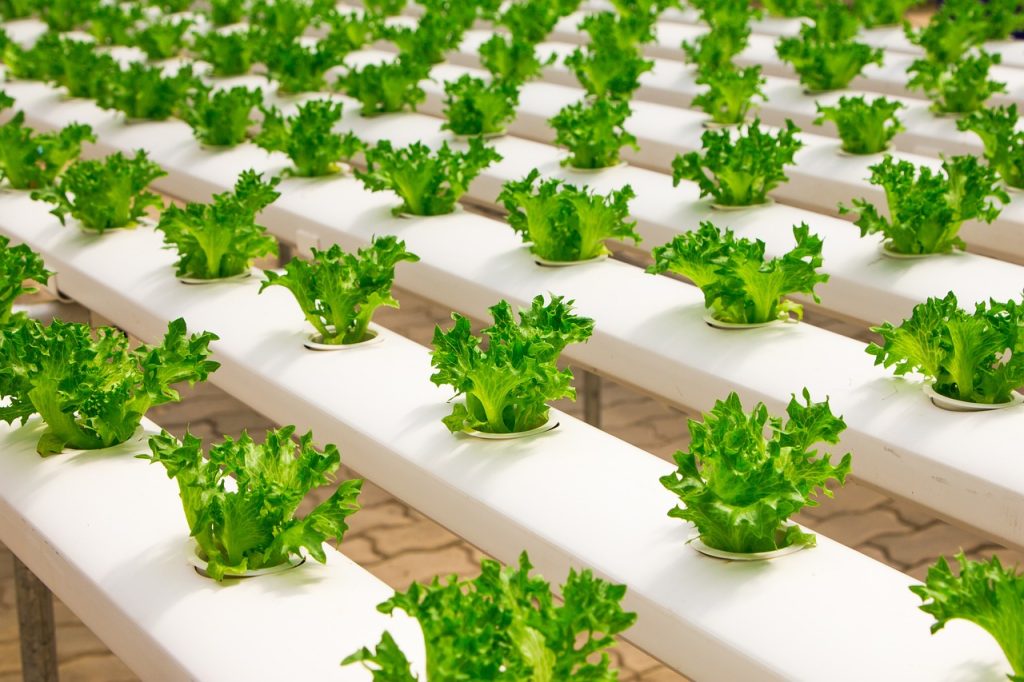
Pruning and Training Techniques for Hydroponic Peppers
Pruning and training your pepper plants are essential practices for maximizing yield and improving fruit quality in a hydroponic system. By implementing proper pruning and training techniques, you can encourage healthy growth, increase fruit production, and optimize space utilization in your hydroponic pepper system.
Benefits of Pruning and Training Peppers
Pruning and training pepper plants help improve airflow, light penetration, and nutrient distribution within the canopy, resulting in healthier plants and higher yields. By removing unnecessary foliage and shaping the plant structure, you can redirect the plant’s energy towards fruit production, leading to larger and more flavorful peppers. Additionally, proper pruning and training reduce the risk of disease development and improve overall plant health.
Harvesting and Storage of Hydroponic Peppers
Knowing when and how to harvest your hydroponic pepper crop is essential for preserving fruit quality and maximizing yield. Follow proper harvesting and storage practices to ensure that your peppers remain fresh and flavorful for an extended period.
Harvesting Tips for Hydroponic Peppers
Harvest your peppers when they reach the desired size, color, and flavor, as these are indicators of maturity and ripeness. Use sharp scissors or pruning shears to cut the peppers from the plant carefully. Avoid pulling or twisting the peppers, as this can damage the plant and reduce future yields. Store harvested peppers in a cool, dry place away from direct sunlight to maintain their quality and extend their shelf life. Consider freezing or preserving excess peppers to enjoy them throughout the year.
In conclusion, growing peppers in a hydroponic system offers numerous benefits and advantages over traditional soil gardening. By selecting the right pepper varieties, setting up a well-designed hydroponic system, providing optimal nutrients and lighting, and implementing pest and disease management strategies, you can maximize the yield of your hydroponic pepper crop. With proper care and attention to detail, you can enjoy a bountiful harvest of fresh and flavorful peppers year-round. Happy growing!





